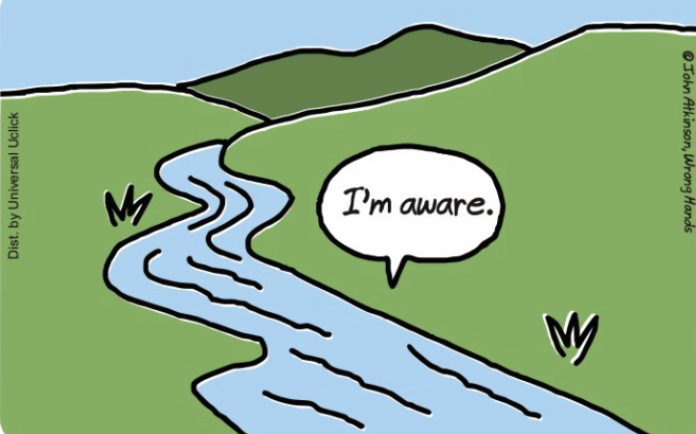What lies in the fisherman’s fascination with the trout? To those who don’t know the finer things in life trout are just another type of fish that taste good and populate many of the world’s rivers. After fishing for thirty days this summer in the high alpine lakes of the Wind River Range, the world famous Green River, and the New Fork River in Southwest Wyoming, I learned exactly why this fish has made bums of people who could have amounted to so much. Whether it be the sheer beauty, the hundreds of different subspecies, or the buzzing of the reel when the 25 incher bites the hopper, men like Izaak Walton, Norman Maclean, Theodore Roosevelt, Ryan Sample, and Jim Justice have been captivated by this fish.
Various types of trout can be found throughout rivers and streams worldwide. Taxonomists know these fish under the family Salmonidae, lining the species of Oncorhynchus, Salmo, and Salvelinius. Oncorhynchus mykiss is the name of the Coastal Rainbow, which is assumed to be the father of all trout. The Coastal Rainbow has evolved over the years into hundreds of different subspecies. Some of the more commonly known are Cutthroat, Brown, Lake, and Brook. Within these subspecies there are many different types, with the Cutthroat having over 30 different variations. To make it even more confusing, some of the different species of trout can form hybrids, such as the Cuttbow. The rare subspecies such as the Golden or the Apache are quite a delight to catch. In fact, I have caught a Golden and it is one of the most beautiful sights I have ever had the pleasure of seeing. For those wondering, a sea trout has no relation to any of these fish; it merely looks the same.
It is truly amazing how much the various types of trout differ in color, average size, and behavior. While the Cutthroat variety commonly known as Steelhead swims hundreds of miles from freshwater to the Northern Pacific every year, another Steelhead variety may spend its entire life within a hundred yard section of a river. A quick run-through of the common subspecies identification:
Rainbow Trout have a reddish-pink streak running down their sides with black spots over the entire body. A Cutthroat has an easily identifiable orange “v-cut” below its mouth. Brook trout are the most beautiful in my opinion, and are identified by an orange belly with purple and yellow spots running over the top. Brown trout are brown and have black spots running all over their bodies while lake trout are more of a grey color with black spots.
Big trout typically eat small fish up to one-third the size of their body, but most trout eat aquatic insects or small terrestrials like grasshoppers, spiders, or beetles. I could write an entire article on the different aquatic insects trout eat, but I’ll save that for later. Big trout have even been known to eat mice. Because the Trout most commonly eats bugs, fly-fishing had to be created in order to do what the spinning rod could not.
Fly-fishing has gained huge popularity ever since Brad Pitt took on the roll of Paul in Robert Redford’s adaptation of Norman Maclean’s A River Runs Through It. Because of fly-fishing’s ever increasing popularity, Trout conservation efforts have become crucial to fight overfishing. Trout Unlimited was organized in 1959 in order to preserve freshwater streams and rivers, organizing conservation efforts and trout stocking. Contrary to popular belief, most trout across the world are stocked and there are thousands of hatcheries around the globe. I strongly recommend you take a field trip to your nearest hatchery to look at the hundreds of baby trout and learn how you can get involved. The various methods of physically stocking are truly fascinating…
The trout conservation efforts of today are extremely interesting. For the past 150 years or so, men couldn’t wait to stock their favorite trout in the nearest river. As a result, native trout have become in danger. For example, the invasive rainbow trout stocked in Georgia’s streams threatens the population of the Brook Trout native to our area due to the more aggressive behavior and larger average size of Rainbows. In order to combat a problem such as this, TU and other organizations have begun to poison certain rivers in order to rid the streams of the invasive non-natural species and make room for the natives. TU also has many other projects improving degraded trout habitats due to problems such as dams, pesticides, or abandoned coal mines. Visit www.tu.org/conservation for more information.
Trout are truly magnificent creatures, and I challenge everyone to search through all the different variations of trout and admire this beautiful fish. It would be well worth the hours of homework abandoned. I know it has been for me.


